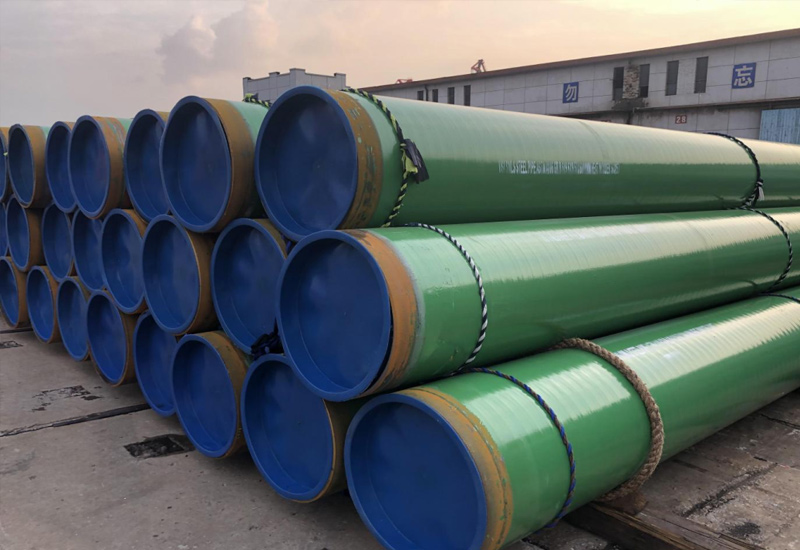HOT BLOG TAGS
ASTM A671
ASTM A671 Standard: Technical Specifications for Electric-Fusion-Welded Steel Pipe in Atmospheric and Cryogenic Service
1. Scope and Classification System
1.1 Definition and Applications
ASTM A671/A671M specifies requirements for electric-fusion-welded steel pipes operating at atmospheric and subzero temperatures (-196°C to 50°C / -320°F to 120°F). Critical applications include:
LNG boil-off gas (BOG) recovery systems
Cryogenic ethylene transfer lines
Air separation unit piping (liquid O₂/N₂)
Power plant feedwater systems
1.2 Dual Classification System
Material Grades:
| Grade | Base Material | Min. TS (MPa) | Temp. Limit |
| CC60 | Fine-grain carbon steel | 415 | -45°C |
| CC65 | Fine-grain carbon steel | 448 | -60°C |
| CD80 | Mn-Si Q&T steel | 552 | -100°C |
| CG100 | 9% Ni steel | 690 | -196°C |
Manufacturing Classes:
| Class | Heat Treatment | NDE Requirements |
| CL22 | Stress-relieved (590-650°C) | RT optional; Hydrotest req. |
| CL32 | Normalized (900±20°C) | 100% RT + Hydrotest |
| CL52 | Quenched & tempered | 100% RT/UT + Hydrotest |
| CL72 | Q&T + Precipitation hardening | 100% RT/UT + Hydrotest |
2. Dimensional and Chemical Requirements
2.1 Dimensional Tolerances
| Parameter | Tolerance |
| Outside Diameter (OD) | ±0.5% or ±3.2 mm (whichever greater) |
| Wall Thickness (WT) | -0.8 mm to +3.2 mm (min. local WT ≥ nominal -0.3 mm) |
| Out-of-Roundness | ≤1% of nominal OD at any cross-section |
| Weld Reinforcement | ≤3.2 mm internal/external; transition slope ≤15° |
Size Range: OD ≥ 405 mm (16″), WT ≥ 6.4 mm (0.25″)
2.2 Chemical Composition (Grade CC65, wt%)
| Element | Min | Max | Control Objective |
| C | – | 0.23 | Weldability |
| Mn | 0.85 | 1.35 | Strength & low-temp toughness |
| Si | 0.15 | 0.40 | Deoxidation |
| P | – | 0.025 | Cryogenic embrittlement |
| S | – | 0.020 | HIC resistance |
| Ni | – | 0.43 | Toughness enhancement |
*Note: CD80 adds 0.70-1.20% Ni; CG100 contains 8.5-9.5% Ni*
3. Mechanical and Welding Requirements
3.1 Mechanical Properties
| Property | CC65 | CD80 | CG100 |
| Yield Strength (min) | 240 MPa | 550 MPa | 585 MPa |
| Tensile Strength | 450-620 MPa | 690-825 MPa | 760-895 MPa |
| Y/T Ratio (max) | 0.93 | 0.93 | 0.93 |
| Charpy V-Notch | ≥27J @ -60°C | ≥40J @ -100°C | ≥40J @ -196°C |
3.2 Welding Specifications
Process: Double-sided full penetration (ASME Sec IX qualified)
Filler Metals:
CC65: TIG-80Ni1 / E8018-C3
CG100: ENiCrMo-6 / Ni 625
Heat Input Control: 25-40 kJ/cm (interpass temp ≤200°C)
Defect Repair:
Depth ≤33% WT; RT after repair
Hardness ≤ base metal +30 HV
4. Testing and Quality Assurance
4.1 Mandatory Testing Regime
Destructive Testing:
Tensile: 2 specimens per heat (ASTM A370)
Impact: 3 specimens per set at design temp
Bend: 180° side bend, max 3mm crack
Non-Destructive Examination:
Radiography: 100% for Classes ≥32 (ASME Sec V)
Ultrasonic: Full pipe body scan (ASTM A435)
Hydrostatic Test:
P = \frac{2 \times S \times t}{D}
Where S=80% SMYS, t=WT, D=OD; duration ≥10 sec
Supplementary Tests:
DWTT: ≥85% SA @ -30°C (ASTM E436)
HIC Test: CLR≤15% per NACE TM0284
4.2 Quality Control Process

Critical Parameters:
Normalizing: 900±20°C, soak time = 2 min/mm WT
Weld heat input variation: ≤±5%
Digital records: WPS/PQR, NDE reports, heat treatment charts
5. Engineering Applications
5.1 LNG Receiving Terminal (Russia-China Pipeline, 2024)
Pipe: φ1422×32 mm CC70 CL32
Service: -162°C @ 8 MPa
Technology:
Addition of 3.5% Ni → 52J @ -170°C
Semi-automatic SAW with heat input of 28±2 kJ/cm
Examination: DDA-RT
5.2 Arctic Gas Processing Plant (Alaska) (on Stream 2023)
Pipe: φ1219×36 mm CD80 CL52
Conditions: -50°C + seismic loading
Solutions:Quenched & tempered: Y/T=0.88
Full scale burst testing: PFstroke > 231In these tests, the factor PF ≥ 2.5 × DP was full scale burst testing > 2.5 during the full stroke, which was based on the full stroke burst testing result.
Control Monitoring: Out of plane (±5με) and in plane (±50με) fiber optic strain sensing.
6. Technical Data and Future Trends
Performance Metrics:
Field failure rate: 0.09 incidents/1,000 km-year (65% lower than non-compliant pipes)
Cost savings: 50% reduction vs. stainless steel (e.g., $1.2M savings per LNG terminal)
Emerging Developments:
| Challenge | Innovation | Standardization Progress |
| Hydrogen Service | Al₂O₃ nano-coatings (H₂ perm ≤0.3 mL/m²/day) | Proposed Annex in 2026 rev |
| Digital Twins | Blockchain traceability per pipe meter | ASTM WK81234 (draft) |
| Green Manufacturing | EAF process (1.8 tCO₂/t steel) | ISO 14404-2 integration |
Related Products
Share:
HOT TAGS
latest posts
- Steel Density Analysis: Core Differences between Mild and Medium Carbon Steels and Industrial Applications
- Carbon Steel Floating Pipeline Systems: Innovative Applications of LSAW/SSAW Steel Pipes in Marine Engineering
- LSAW Steel Pipe: UOE vs JCOE Process | Allland steel pipe
- Onshore Pipeline: A Complete Selection Guide
- 3PE Pipe Coatings: A Guide to Protection, Standards&Applications











